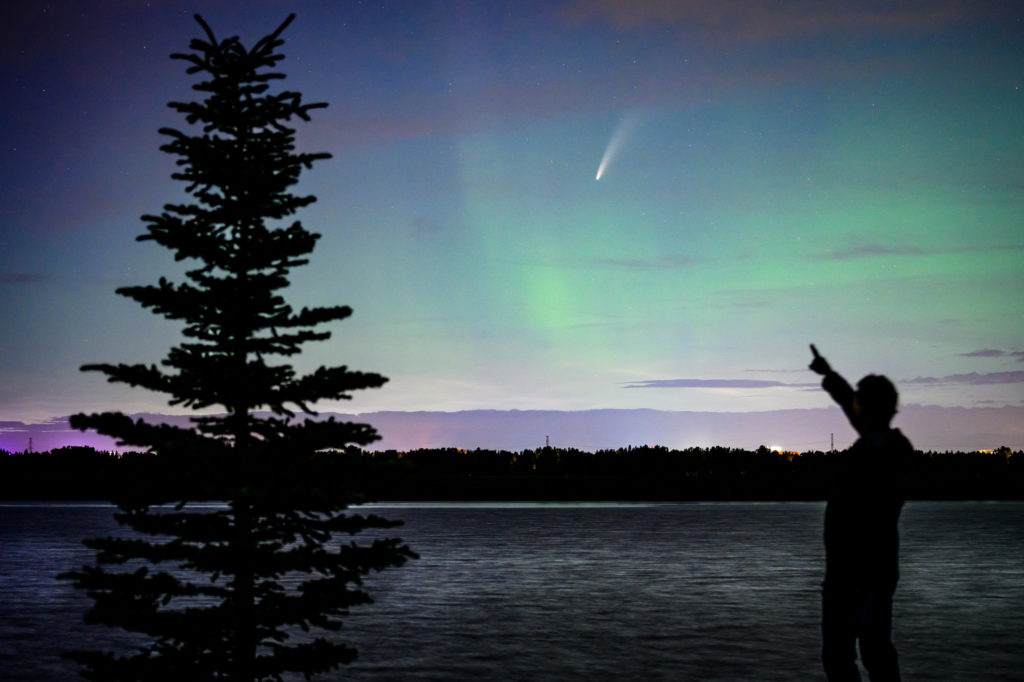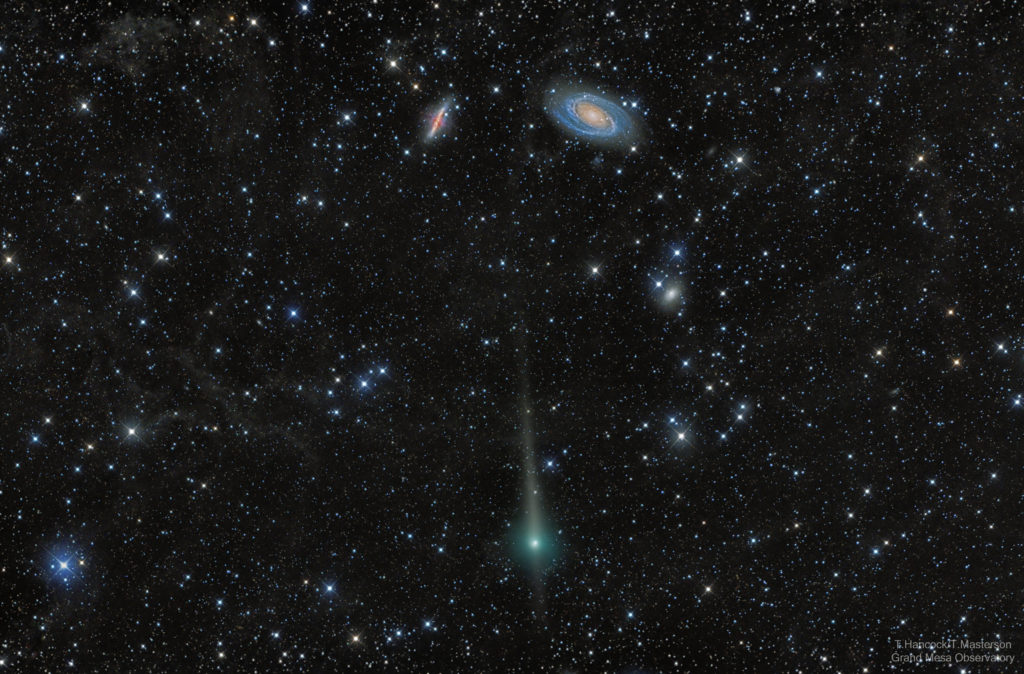
Well Comet C/2020 F3 (NEOWISE) has, unlike many recent comets, exceeded expectations and is putting on a modestly spectacular celestial display for northern-hemisphere stargazers. Earlier this month, it appeared low in the pre-dawn sky. For the rest of July NEOWISE moves into the evening sky and quickly climbs higher as it passes under the bowl of the Big Dipper. By month’s end, the comet will also become visible to southern-hemisphere observers. Under clear sky, the comet is an easy object to see with the unaided eye and surely ranks as the best comet visible north of the equator since Comet Hale-Bopp in 1996-1997. [Read more…] about Comet NEOWISE Update
Share This:


